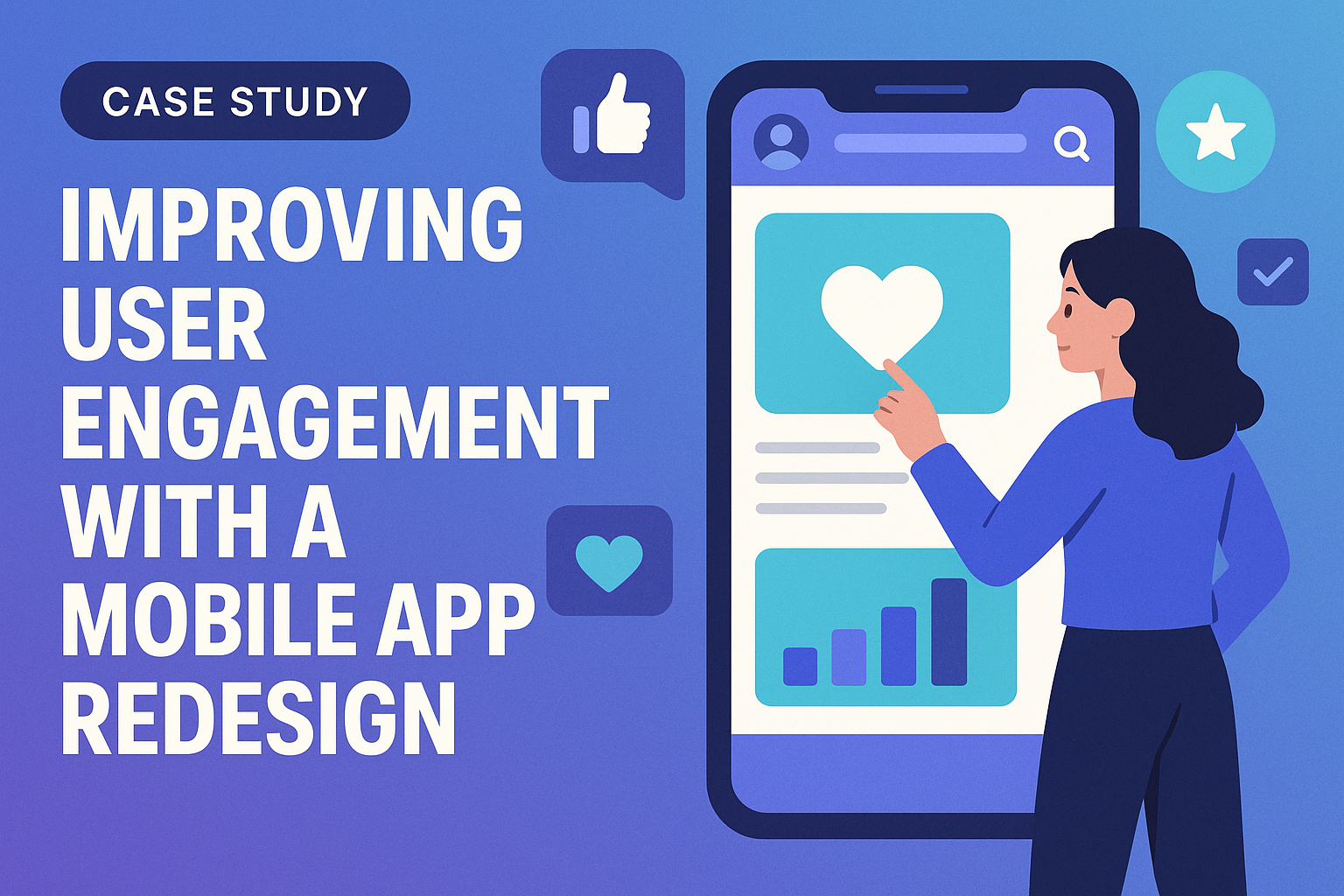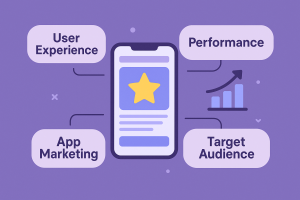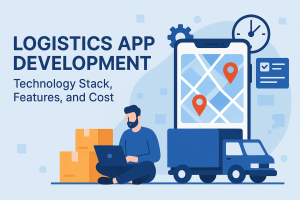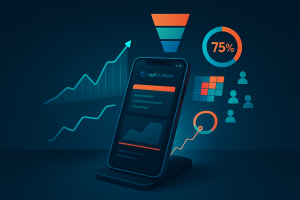User engagement is the lifeblood of mobile applications. When users actively interact with an app, spending more time exploring features and returning consistently, businesses thrive. However, when engagement metrics begin to decline, it signals a critical need for intervention. This comprehensive case study examines how a strategic mobile app redesign transformed declining user engagement into a success story with measurable results.
The mobile app ecosystem continues to evolve rapidly, with consumer expectations constantly shifting. What worked yesterday may not resonate today, making regular assessment and redesign crucial for maintaining competitive advantage. Whether you’re a business owner facing engagement challenges or a developer looking to optimize user experience, this real-world case study provides valuable insights into the redesign process.
Understanding the Challenge: Declining Engagement Metrics
Initial Performance Assessment
Our case study focuses on HealthTrack, a fitness and nutrition tracking application that had experienced steady growth since its launch three years ago. However, in recent months, key engagement metrics had begun to show concerning trends:
- Session duration had decreased by 31% over six months
- Daily active users (DAU) dropped from 45,000 to 28,000
- User retention rate at 30 days fell from 42% to just 18%
- Feature adoption beyond core tracking showed minimal activity
- App store ratings declined from 4.7 to 3.9 stars
These declining metrics were particularly alarming as acquisition costs remained consistent, meaning the company was spending the same amount to acquire users who were delivering significantly less value over their lifecycle.
Root Cause Analysis
Before jumping into redesign, the team conducted comprehensive research to understand underlying issues. This involved:
- User surveys and interviews: Direct feedback from both active and churned users
- Heatmap analysis: Visual representation of where users spent time and where they abandoned screens
- Funnel analysis: Identifying dropout points in key user journeys
- Competitor analysis: Examining successful competitors’ approaches and interfaces
- Technical performance assessment: Evaluating load times, crashes, and other technical issues
This investigation revealed several critical issues:
- The app’s interface felt outdated compared to newer competitors
- Navigation required too many steps to complete common tasks
- Key features were buried in complex menu structures
- The onboarding process failed to adequately demonstrate value
- Data visualization was confusing and lacked actionable insights
- Performance issues caused frustration on older devices
The design team recognized that addressing these issues would require more than cosmetic changes—a comprehensive redesign focusing on user experience was necessary.
Strategic Redesign Approach
Setting Clear Objectives
The redesign team established specific, measurable objectives for the project:
- Increase average daily active users by 40% within three months
- Improve 30-day retention rates to at least 35%
- Increase average session duration by 25%
- Boost feature adoption beyond core functions by 50%
- Return app store ratings to 4.5+ stars
These objectives provided clear targets against which progress could be measured and success evaluated.
Assembling the Right Team
The project required collaboration across multiple disciplines. The team included:
- UX/UI designers with mobile expertise
- Product managers to define feature priorities
- Developers with experience in cross-platform mobile app development
- Data analysts to track performance metrics
- Customer support representatives to provide user perspective
- Marketing specialists to plan the relaunch strategy
The company partnered with an experienced mobile app development company to guide the redesign process, bringing fresh perspective and specialized expertise in user engagement strategies.
User-Centered Design Methodology
The redesign followed a structured, user-centered approach:
- Discovery Phase: Consolidating research findings and establishing design principles
- Ideation: Generating potential solutions through collaborative workshops
- Wireframing: Creating low-fidelity layouts focusing on information architecture and user flows
- Prototyping: Developing interactive models to test user journeys
- Visual Design: Applying brand elements and visual hierarchy
- Development: Implementing the new design across platforms
- Testing: Validating usability and technical performance
- Launch: Phased rollout with continuous monitoring
Throughout these phases, the team maintained focus on solving the identified user problems rather than simply adding features or following design trends.
Key Redesign Elements and Their Impact
Streamlined Navigation Architecture
The original app relied on a complex tab and burger menu system that buried important features. The redesign implemented:
- A simplified bottom navigation with four primary categories
- Contextual action buttons that appeared when relevant
- Personalized quick-access shortcuts based on usage patterns
- Consistent back navigation and orientation cues
This new architecture reduced the average number of taps to reach key features from 4.7 to just 2.3, significantly improving navigation efficiency.
Personalized User Dashboard
The original static dashboard was replaced with a dynamic, personalized experience:
- Customizable widgets showing the most relevant data
- Intelligent prompts based on individual goals and behavior
- Achievement celebrations and milestone recognitions
- Social proof elements showing community activity
This personalization made the app feel more relevant to each user’s needs and goals, creating a stronger emotional connection with the product.
Reimagined Onboarding Experience
The redesign completely overhauled the onboarding process, focusing on value demonstration rather than feature tutorials:
- Goal-based setup that aligned the app with user motivations
- Progressive onboarding that introduced features contextually
- Quick wins within the first session to establish positive associations
- Clear expectations about notifications and data usage
These changes improved first-week retention rates by 47%, indicating much stronger initial engagement with the app.
Visual Refresh and Consistency
The visual design was modernized with attention to both aesthetics and functionality:
- Updated color palette with improved accessibility considerations
- Typography system optimized for readability on mobile screens
- Consistent iconography with clear meaning across contexts
- Motion design that guided attention and provided feedback
Designing visually appealing apps user interface was crucial not just for aesthetic purposes but for creating an intuitive experience that reduced cognitive load on users.
Performance Optimization
Technical improvements complemented the design changes:
- Reduced initial load time by 62% through code optimization
- Implemented progressive loading for content-heavy screens
- Added offline functionality for core features
- Reduced battery consumption during background operations
Tips and tricks for mobile app performance optimization helped address the technical frustrations that had contributed to user abandonment.
Data Visualization Enhancements
The way information was presented underwent a significant transformation:
- Simplified graphs with clear insights highlighted
- Progress visualization that emphasized achievements
- Contextual comparisons rather than abstract numbers
- Actionable recommendations based on personal data
These changes helped users understand their data and take meaningful actions, increasing the perceived value of tracking activities.
Implementation Process
Prototype Testing and Iteration
Before full development, interactive prototypes were created and tested with real users:
- Five iterations of high-fidelity prototypes
- Testing sessions with 45 users across different demographics
- A/B testing of alternative navigation approaches
- Heatmap analysis of prototype interactions
The testing revealed several unexpected insights that led to design refinements:
- Users valued progress visualization more than detailed metrics
- Social features were more motivating than initially assumed
- Gamification elements resonated strongly with casual users
- Notification preferences varied widely across user segments
These findings informed the final design direction and prioritization of features.
Development Approach
The implementation phase followed modern development practices:
- Modular architecture allowing feature-by-feature rollout
- Comprehensive component library for consistency
- Automated testing to ensure quality across devices
- Phased implementation with continuous integration
The app development process focused on building flexibility into the system to accommodate future enhancements without requiring another comprehensive redesign.
Migration Strategy
Transitioning existing users to the new design required careful planning:
- Preview option for early adopters to provide feedback
- In-app tutorials highlighting new navigation and features
- Gradual rollout to monitor technical issues
- Easy option to temporarily revert to the previous version
This approach reduced transition shock and gathered valuable feedback before the full release.
Measuring Results
Short-Term Impact
Within the first month after release, several positive indicators emerged:
- Daily active users increased by 32%
- Session duration improved by 28%
- Feature discovery (users trying previously unused features) rose by 67%
- Crash rates decreased by 94%
- App store rating average for new reviews climbed to 4.6 stars
These early indicators suggested the redesign was addressing the core engagement issues.
Three-Month Assessment
After three months, the full impact of the redesign became clear:
- Daily active users reached 41,000 (46% increase from pre-redesign)
- 30-day retention rate improved to 37%
- Average session duration increased by 42%
- Feature adoption beyond core tracking increased by 78%
- In-app purchases grew by 53%
The redesign had not only met but exceeded most of the established objectives, demonstrating a clear return on investment.
User Feedback Analysis
Qualitative feedback complemented the quantitative metrics:
- App store reviews frequently mentioned the improved interface and performance
- Social media sentiment analysis showed 76% positive mentions (up from 34%)
- Direct user feedback highlighted appreciation for personalization and simplified navigation
- Support ticket volume decreased by 39%
This positive feedback validated the user-centered approach and indicated stronger emotional connection with the brand.
Key Learnings and Best Practices
What Worked Well
Several strategies proved particularly effective:
- Data-driven decision making: Using analytics to identify specific pain points rather than relying on assumptions
- Continuous user involvement: Including users throughout the process, not just at the beginning and end
- Phased implementation: Rolling out changes gradually to manage risk and gather feedback
- Cross-functional collaboration: Breaking down silos between design, development, and business teams
- Focus on core journeys: Prioritizing improvements to the most common user paths before addressing edge cases
Challenges Encountered
The team faced several obstacles during the project:
- Legacy technical constraints: Working within the existing codebase limited some design options
- Balancing stakeholder priorities: Managing competing interests from different internal teams
- User transition management: Helping long-term users adapt to significant changes
- Performance across device diversity: Ensuring consistent experience across varied hardware
- Timeline pressure: Maintaining quality while facing market pressure to launch quickly
Addressing these challenges required flexibility, clear communication, and occasionally making difficult trade-offs.
Transferable Insights for Other App Redesigns
This case study reveals several best practices applicable to other mobile app redesign projects:
- Begin with comprehensive analytics: Understand exactly where engagement drops before designing solutions
- Prioritize based on user impact: Focus on changes that affect the most users most significantly
- Design for your existing users first: While attracting new users is important, retaining current ones typically offers better ROI
- Test with real users on real devices: Contextual testing reveals issues that lab testing might miss
- Plan for the transition: Consider how to bring existing users along rather than just designing for new ones
Future Directions
Continuous Improvement Strategy
The redesign wasn’t viewed as a one-time project but as the beginning of an ongoing optimization process:
- Implementation of regular UX audits every six months
- A/B testing framework for continuous feature refinement
- Dedicated resources for analyzing emerging engagement patterns
- Quarterly planning for incremental enhancements
This approach ensures the application continues to evolve with user needs and market trends.
Emerging Technologies Consideration
The redesign team also identified opportunities for future enhancements using emerging technologies:
- Exploring how blockchain powers NFT app development for digital rewards and achievements
- Investigating machine learning for more personalized recommendations
- Considering augmented reality features for workout guidance
- Evaluating voice interface options for hands-free interaction
These forward-looking considerations ensure the app remains competitive as technology evolves.
Scaling User Research
One key learning was the value of ongoing user research. The team established:
- A formal user research panel for continuous feedback
- Integration of conduct user testing for your mobile app into regular development cycles
- Improved analytics infrastructure for deeper behavioral insights
- Regular competitive analysis to track industry innovations
Conclusion
The HealthTrack app redesign demonstrates how a strategic, user-centered approach to mobile app redesign can dramatically reverse declining engagement metrics. By thoroughly understanding user pain points, establishing clear objectives, and implementing thoughtful design solutions, the team transformed an underperforming product into a highly engaging application.
Key to this success was the recognition that engagement isn’t just about visual appeal—it encompasses navigation efficiency, performance optimization, personalization, and meaningful data presentation. The comprehensive approach addressed multiple dimensions of the user experience simultaneously.
For companies facing similar engagement challenges, this case study offers a blueprint for effective redesign. Working with experienced partners like a specialized hire mobile app developer team can provide the expertise needed to navigate complex redesign projects successfully. Similarly, considering offshore mobile app development can provide cost advantages while maintaining quality for companies with budget constraints.
The most important takeaway is that declining engagement isn’t irreversible. With proper analysis, strategic design thinking, and disciplined implementation, mobile applications can be revitalized to meet evolving user expectations and business objectives.
Remember that user engagement is ultimately about creating value for your audience. When users find genuine utility, delight, and meaning in their interactions with your app, engagement naturally follows. This principle guided the HealthTrack redesign and remains the north star for successful mobile applications in an increasingly competitive landscape.
By approaching redesign as an opportunity rather than a setback, companies can transform engagement challenges into catalysts for innovation and growth.







